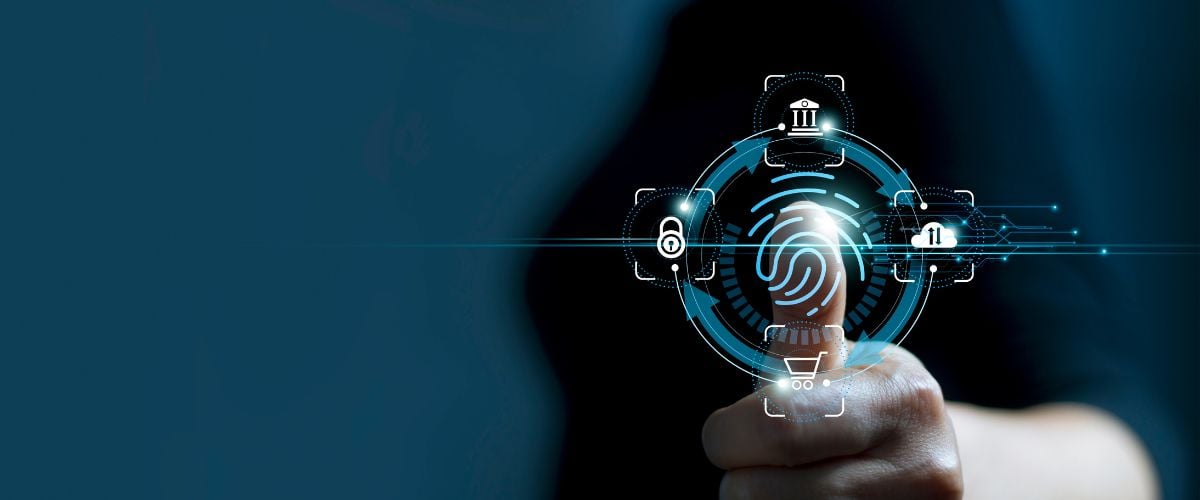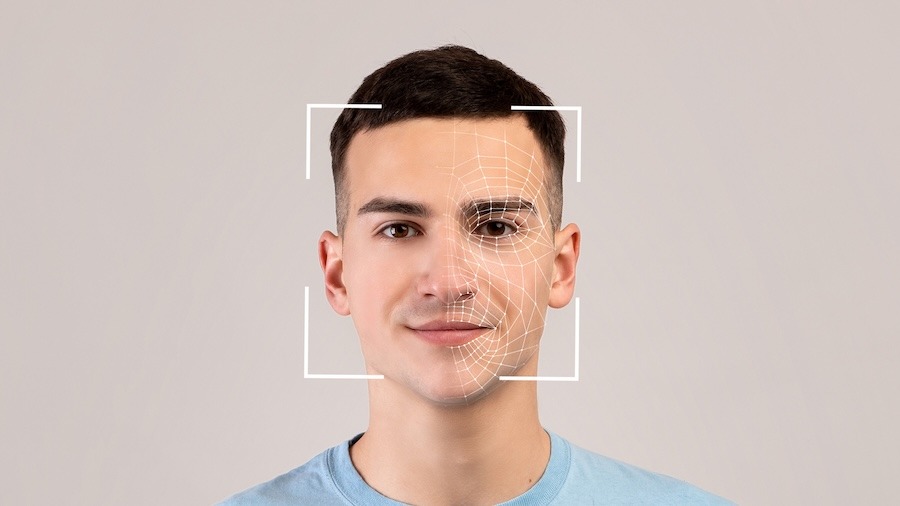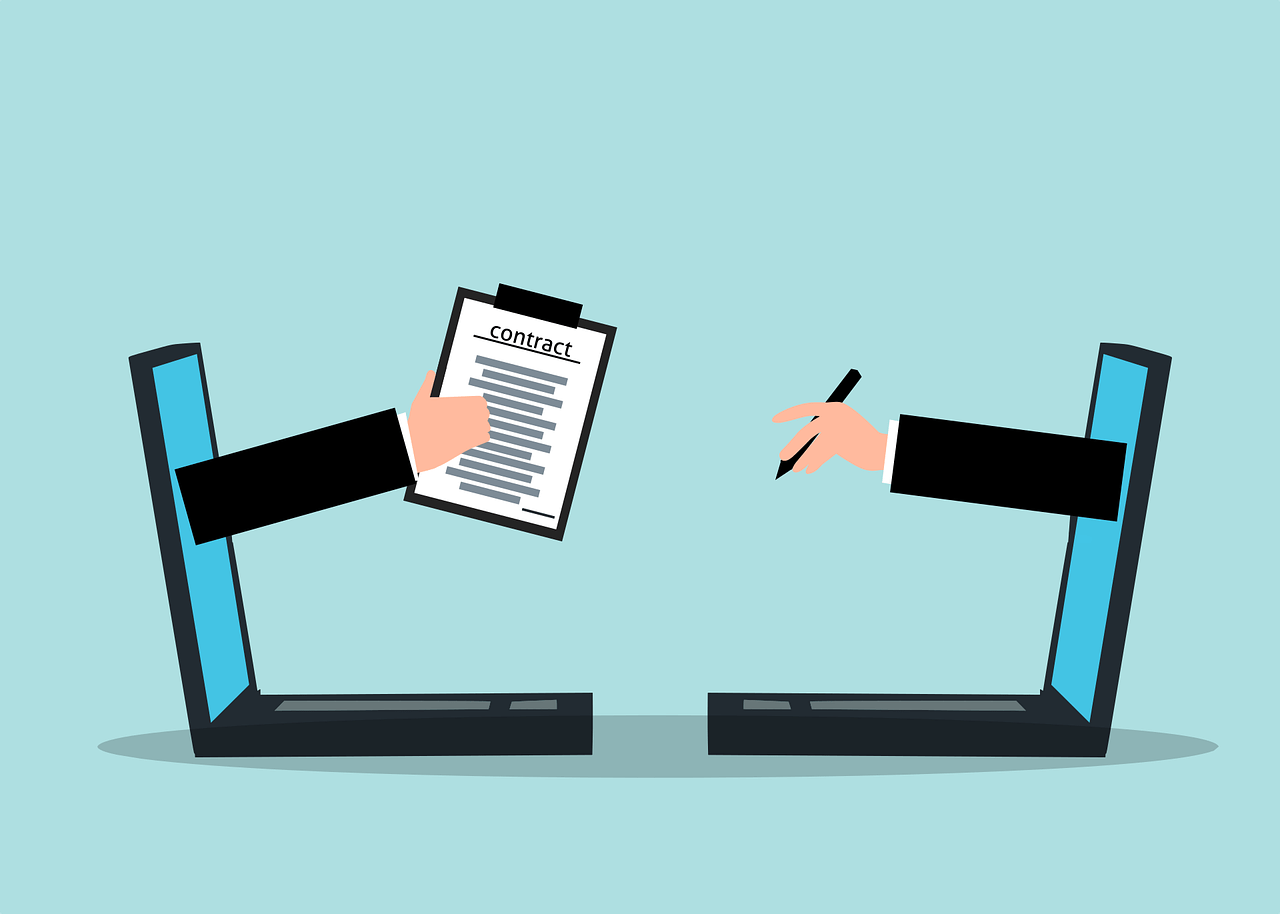As digital identity solutions continue to advance, remotely verifying your identity is becoming more convenient than ever. Until now, proving who you are has always required a physical ID card or passport, creating limitations for fully digital processes.
However, with the introduction of government-issued eIDs (electronic identities), which allow for electronic verification directly on a smartphone, this outdated process is now changing in many countries around the world. The use of eID devices enables secure authentication for services like online banking, e-government portals, and digital contracts—without the need for a physical document. With several eID identification systems already in circulation, more countries are embracing this shift.
Continue reading to explore what an eID is, how to get an eID number, and how different regions are implementing electronic identity solutions.
What is an eID?
An eID (electronic identity) is a digitally authenticated and verified identity that allows individuals and organizations to securely access online services, perform transactions, and provide electronic signatures. As a trusted digital identity solution, an eID identification system ensures secure authentication while minimizing the risks of identity theft and fraud.
A digital identity, such as an eID, typically includes:
- Personal Identification Data: personal identification data typically includes name, date of birth, gender, and an eID number
- Authorizations and Credentials: authorizations and credentials are issued and managed by government authorities or accredited identity providers
Modern eID devices are used in various sectors, including online government services, online banking, and secure digital contracts. Many eIDs are conveniently stored on smartphones or integrated into NFC-enabled ID cards, making them quickly accessible for secure authentication.
Many countries now offer mobile eID solutions, enabling users to authenticate themselves remotely without the need for a physical ID card. These eID devices not only facilitate secure access to sensitive information, but also enable users to complete high-trust transactions, such as signing documents with a Qualified Electronic Signature (QES).
Getting an eID varies by country. Some governments issue state-backed eIDs, while others rely on private-sector solutions. Obtaining an eID number usually involves an identity proofing process, ensuring compliance with eIDAS regulations in the EU or other national frameworks (i.e. ZertES in Switzerland).
As electronic identity solutions continue to expand, the role of eID numbers, eID devices, and digital identity proofing is becoming increasingly important in enabling secure, remote identification worldwide.
Why Is The Concept so Important?
An electronic identity (eID) enables a fully digital verification process, eliminating the need to present a physical form of identity. In recent years, electronic proof of identity has gained increasing significance across various sectors for different reasons.
For businesses, particularly financial service providers, eID identification plays a crucial role in Know Your Customer (KYC) processes. Financial organizations must verify their customers’ identities. This process is traditionally handled through digital identity proofing methods such as Auto-ID or Video-ID procedures. However, eID verification now provides a more efficient and cost-effective way to meet regulatory requirements and enhance security.
A secure eID device allows citizens to remotely handle essential, government-related tasks, such as submitting tax returns, applying for passports, or even voting online. By leveraging eID numbers and secure digital authentication, government organizations aim to create seamless, legally compliant digital interactions.
With growing expectations for eID solutions, both the EU and Switzerland are actively working on expanding and regulating electronic proof of identity within their respective jurisdictions. As eID devices and mobile eID solutions become more widely adopted, their role in secure, remote identity verification will continue to expand.
Why Do I Need an eID?
Some of the most common eID use cases include the following:
- E-Government: Citizens can use eID identification to securely log in to government portals to file tax returns, apply for ID documents, and even participate in online voting where permitted. Many governments are integrating eID verification to streamline public services.
- E-Commerce: Customers can use their eID number to securely log in to online stores, place orders, and complete payments, reducing the need for repeated identity checks.
- Banking & Finance: Users can be securely authenticated for online banking, digital transactions, and financial services using their eID device, ensuring compliance with Know Your Customer (KYC) regulations.
- Healthcare: Patients can use eID verification to access electronic health records, utilize telemedicine services, and securely fill prescriptions online while ensuring medical data privacy.
- Education: An eID on a phone or other device can be used for secure enrollment at universities, verification of academic qualifications, and access to digital learning platforms.
- There are many use cases for eID's in various sectors and industries, with the main goal of making identity verification and authentication in the digital world more secure and efficient.
There are numerous applications for eID devices across industries, with the main goal of making identity proofing and authentication in the digital world more secure, efficient, and user-friendly. Instead of presenting physical documents or manually completing lengthy forms, users can rely on electronic identity for quick, seamless, and highly secure authentication.
However, since eID devices are not yet widely adopted around the world, many organizations continue to use alternative digital identity proofing methods. One common solution is Auto-Ident, which offers a fast, secure, and efficient way to verify identities remotely.
On the other hand, as eID verification gains traction, businesses and governments are expected to further integrate electronic identity solutions to enhance security and user experience.
What is an eID on a Phone?
An eID on a phone refers to the ability to store and use an eID device, such as a digital identity card or mobile authentication, directly on a smartphone. Today’s electronic identity systems are designed for integration with mobile technology, allowing users to perform eID verification through various secure methods.
An eID on a phone enables individuals to store and utilize their electronic identity digitally, eliminating the need for a physical ID card. Whether in the form of a mobile authentication solution or an integrated digital identity card, this technology seamlessly interacts with modern smartphones.
Leveraging biometric authentication, NFC scanning, and cryptographic security, allows users to remotely verify their own identity while maintaining robust security measures. This advancement significantly improves accessibility, allowing individuals to log into platforms, sign legally binding documents, and authenticate transactions without cumbersome paperwork.
Furthermore, as mobile technology continues to evolve, both public and private sectors are also embracing eID solutions to enhance digital identity management, ensuring efficiency and security across various industries.
But what is an eID number? An eID number serves as a unique identifier assigned to an individual’s electronic identity. Typically issued by government agencies or accredited providers, this identifier is embedded in national eID cards, mobile eIDs, and biometric passports. As reliance on digital identity proofing grows, the eID number plays a pivotal role in enabling trustworthy and seamless identity verification worldwide.
eID in the EU
The European Union (EU) is advancing its digital transformation strategy by promoting electronic identity (eID) to facilitate cross-border online services and enhance eID adoption in the private sector. A key objective is the creation of a harmonized digital identity through the European Digital Identity (EUDI) Wallet, recognized across Europe.
In 2014, the EU achieved a significant milestone with the adoption of the eIDAS Regulation, establishing a legal framework for electronic identification and trust services within the EU. Building upon this, the European Digital Identity Regulation aims to harmonize national eID approaches among member states, setting the framework for issuing EUDI Wallets. This regulation was put into effect in May 2024, mandating that by 2026, all member states must offer at least one EUDI Wallet to citizens and residents.
To ensure technical interoperability, the EU is developing common standards and specifications for the EUDI Wallet, providing users with secure and practical methods to share identity-related data. Compatibility among various eID solutions across member states is a priority.
In April 2023, the European Commission initiated four large-scale pilot projects involving over 350 private and public organizations from 26 member states, as well as Norway, Iceland, and Ukraine. These projects are testing the EUDI Wallet across diverse use cases, including education, social security, payment authorization, digital passports, e-signatures, and electronic prescriptions. The pilots are scheduled to continue until 2025, providing valuable insights for the EUDI Wallet’s deployment.
The EUDI Wallet is designed to give Europeans full control over their data when accessing online services, minimizing unnecessary data sharing. Service providers legally required to verify customer identities will be obligated to accept the EUDI Wallet for authentication purposes.
In summary, the EU’s commitment to a unified digital identity framework aims to enhance security, privacy, and convenience for citizens and businesses engaging in digital interactions across Europe.
eID: Current Status in the DACH Region
The concept of electronic identity (eID) varies across Europe, with significant differences among countries, particularly within the German-speaking DACH region of Germany, Austria, and Switzerland. While Austria has made substantial progress, Germany and Switzerland are advancing at different paces.
Switzerland
In Switzerland, the journey toward a state-issued eID has been evolving. After the initial proposal was rejected in a 2021 referendum, efforts have been refocused on developing a government-issued eID. The Federal Council is expected to present a revised eID law by the end of 2023.
In March 2023, a public sandbox test infrastructure was launched to gather technical and organizational insights, involving over 40 business case applications. The official rollout of the Swiss eID is anticipated in early 2026, with the Federal Electronic Wallet, branded as ‘SWIYU,’ serving as the primary platform for citizens to manage their eIDs and associated credentials.
Germany
Germany has been integrating electronic identification features into its national ID cards since 2010, facilitated by an embedded RFID chip. In 2017, the eID function was enhanced to allow smartphones to read ID cards, aiming to provide a fully digital ID card stored in a mobile wallet, known as the ‘smart eID.’
However, the nationwide launch has faced delays, with initial targets set for 2022, postponed to 2023, and currently still undergoing various test phases. As of now, the smart eID is available only on select smartphone models, and a comprehensive nationwide launch is still pending.
Austria
Austria has been a frontrunner in eID implementation, first introducing the ‘Bürgerkarte’ (Citizen Card) back in 2003. This system has since changed to ‘ID Austria,’ which has been available since 2022.
ID Austria enables users to present eID cards and digital driver’s licenses on their smartphones and to sign documents digitally. It complies with all requirements of the General Data Protection Regulation (GDPR) and the national Data Protection Act. As of December 2023, ID Austria has replaced previous systems, offering enhanced digital identification and authentication capabilities, with over 2 million enrollees.
In short, while the eID concept is gaining traction across Europe, its implementation varies significantly. Austria leads with a fully operational system, Germany continues to refine its smart eID amidst delays, and Switzerland is progressing toward a state-issued eID with an expected launch in 2026.
How to Get the eID: Activating Your eID in the DACH Region
Using the eID function in the DACH region is very simple. Depending on your country, you’ll need the following specific instructions:
Implementation Plans in Switzerland
As of February 2025, Switzerland is advancing its plans to implement a state-recognized electronic identity (e-ID), with the Federal Council adopting the e-ID Act in December 2024. The e-ID will enable residents to verify their identity online securely. The federal government will operate the necessary trust infrastructure and issue the e-ID. The rollout is scheduled to begin in 2026 through a dedicated wallet app called ‘SWIYU’.
In the interim, SwissID, developed by the SwissSign Group, serves as a widely adopted digital identity platform in Switzerland. The platform allows users to securely access various online services, including government portals, e-commerce platforms, and sign digital contracts. SwissID is not a state-issued e-ID but offers a trusted solution for digital identification needs.
To utilize SwissID, users can download the SwissID App, which facilitates online identity verification by scanning an official identification document and capturing a selfie. This process enables access to services requiring proof of identity and supports features like legally valid electronic signatures.
In summary, while Switzerland’s official e-ID system is set to launch in 2026, SwissID currently provides a robust alternative for secure digital identity verification across a range of online services.
How eID works in Germany
To utilize the eID function or store it as a smart eID on your smartphone in Germany, the following requirements must be met:
- ID Card with Online ID Functionality: Ensure your ID card has the online identification feature activated. Since July 15, 2017, all German ID cards have this function enabled by default. The card contains an embedded chip that facilitates data transmission.
- NFC-Enabled Smartphone: Your smartphone must support Near Field Communication (NFC) to communicate with the ID card. This allows data transfer when the ID card is held close to the device.
- AusweisApp2: Download and install the AusweisApp2 application, developed by the Federal Ministry of the Interior and Community (BMI). This app establishes a secure connection between your ID card and the service provider, enabling online authentication.
- Personal PIN: Upon receiving your ID card, you are provided with a five-digit transport PIN by mail. Before using the online ID function, replace this with a personal six-digit PIN through the AusweisApp2. This PIN is required each time you use the eID function.
By meeting these requirements, you can effectively utilize Germany’s eID system for secure online identification and authentication.
Activation Process of the ID Austria
ID Austria allows Austrian citizens to present their ID cards or driver’s licenses and submit digital signatures via smartphone. To access all functions, users must register with a local authority. However, those with a previously registered Handy-Signatur (mobile signature) can transition online without further verification.
- Users must be at least 14 years old and install the Digitales Amt (Digital Office) app or use a FIDO security key for authentication. In the future, every citizen will automatically receive ID Austria when applying for an ID card or passport. Designed for EU-wide use, it provides secure access to services across member states.
- For those without a registered Handy-Signatur (mobile signature), in-person verification is required. The Digitales Amt app guides users through the process, ensuring a seamless transition.
ID Austria enhances digital identity proofing, offering a secure and convenient authentication method.
Is the eID Secure?
The security of electronic identification (eID) systems relies on multiple factors, including implementation, technological safeguards, operational oversight, and protective measures. Designed to enhance identity proofing and authentication, eIDs incorporate strong encryption protocols and multi-factor authentication to counter unauthorized access.
Personal identification data is exchanged through end-to-end encryption, activated once the user enters their personal PIN. Users retain full autonomy over their data, deciding when and with whom to share it. Before any transaction, they receive a clear notification of the recipient.
Under the eIDAS Regulation, which governs electronic identity verification across the EU, eID systems must meet strict security and interoperability standards. In Germany, the Federal Office for Information Security (BSI) has certified the eID procedure with the highest level of trust. The upcoming smart eID, enabling secure digital identity storage on smartphones, is expected to undergo comprehensive testing to meet these stringent security benchmarks.
Overall, eID verification is built on a layered security framework, ensuring confidentiality, integrity, and user control while complying with international electronic identity regulations.
Digital IDs in Other Countries
Numerous countries have implemented some form of digital identity system to ensure secure access to digital services:
- United States: The United States does not have a national eID system like the EU’s eIDAS. Furthermore, state-issued mobile driver’s licenses (mDLs) are emerging, but adoption varies. Login.gov provides federal authentication for government services, while ID.me, Apple, Google, and Microsoft offer private digital identity verification. The Real ID Act standardizes physical IDs but does not establish a digital identity framework. The U.S. digital identity landscape remains fragmented across different sectors and levels of government.
- Singapore: Launched in 2003, Singpass (Singapore Personal Access) serves as Singapore’s trusted digital identity platform, enabling residents to access over 2,700 services across more than 800 government agencies and businesses. As of November 2024, Singpass boasts a user base exceeding 5 million, covering 97% of citizens and permanent residents aged 15 and above.
- Sweden: Since 2003, Sweden’s BankID system has provided a reliable eID solution, enabling electronic signatures for tax returns, contracts, and secure online payments. As of 2025, BankID has more than 8 million users, reflecting its widespread adoption for both public and private sector services.
- Estonia: Estonia offers an e-Residency program, allowing non-residents to obtain a government-issued digital identity. This enables entrepreneurs and digital nomads to access Estonian e-services, establish and manage companies online, and conduct business remotely within the European Union.
- India: The Aadhaar system in India assigns a unique 12-digit identity number to residents, based on their biometric and demographic data. As of 2025, over 1.3 billion Aadhaar numbers have been issued, facilitating access to various government services, subsidies, and financial inclusion initiatives.
- Finland: Finland has been a pioneer in digital identification, introducing its first eID card in 1999. In April 2024, Finland initiated a project to develop a national digital identity wallet, aligning with the European Union’s eIDAS regulation. This wallet will enable citizens to access public and private digital services securely across the EU. The project is slated for completion by December 2026.
These digital identity systems exemplify global efforts to enhance digital identity verification, streamline access to services, and bolster security in an increasingly digital world.
PXL Vision plans integration of eID as Proof of Identity
Companies are navigating significant challenges amid evolving electronic identity (eID) developments. Despite ongoing harmonization efforts, they must adapt to the coexistence of multiple eID systems across different jurisdictions.
As a Swiss leader in digital identity proofing, PXL Vision is addressing this complexity by expanding its identity verification solutions to support the broad integration of eID devices and eID verification systems. This approach ensures seamless eID identification, enabling businesses to authenticate users efficiently while complying with diverse regulatory frameworks.
Flexibility for eID and traditional verification methods
Given the anticipated diversity of electronic identity (eID) solutions, PXL Vision recognizes the importance for organizations to offer customers multiple verification methods. This includes maintaining auto-identification procedures based on physical ID documents alongside eID verification. Such an approach ensures inclusivity, allowing individuals without access to eID systems to undergo secure identity verification. PXL Ident, our web-based automated ID verification solution, exemplifies this strategy by enabling real-time verification using physical documents, thereby accommodating various customer needs and enhancing user experience.
Cutting Edge Verification Processes
To address the diverse landscape of national electronic identity (eID) systems, PXL Vision is expanding its identity verification solutions to incorporate a wide array of eID types. This initiative will enhance the company’s existing portfolio, which already supports identity documents from over 165 countries. By enabling clients to select specific eID types for integration into their verification processes, PXL Vision offers organizations the flexibility to adapt to various regional requirements and the evolving digital identity market.
Is eID already an issue for your organization?
Then let's talk about it.
FAQ about eID
No, a digital identity refers to all the personal data and online accounts linked to an individual. In contrast, an electronic identity (eID) is a government-issued digital credential used for secure identity verification in online transactions. While both exist in the digital space, an eID identification system is officially authenticated and designed for secure access to e-government services, banking, and other digital platforms.
The process of how to get an eID varies by country. Some nations provide eID numbers linked to a national ID card with a chip for NFC verification, while others offer a mobile eID solution stored in a wallet app. Generally speaking, users must register with a government authority and verify their identity before activating their eID device. Not all countries offer eID verification yet, so availability depends on national regulations.
Unfortunately, eID devices are not universally accepted for travel. In the EU, some eID numbers can be used for Schengen Area travel, but most countries still require a passport or physical ID. In the U.S., some states accept mobile driver’s licenses (mDLs) for domestic flights, but policies vary. Future developments aim to make eID verification a standard for international travel, but for now, travelers should check local requirements before relying on an eID for travel.
.
.png?width=126&height=101&name=logo%20(2).png)
.png?width=63&height=51&name=logo%20(6).png)











